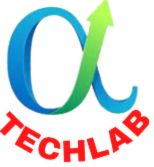गूगल crawler क्या होता है तथा यह कैसे कार्य करता है |
गूगल क्रॉलर एक सॉफ्टवेयर होता है जो गूगल जैसी वेब साइटों को सैकड़ों या हजारों वेब पेजों की डेटाबेस में इंडेक्स करने में मदद करता है। यह एक ऑटोमेटेड प्रक्रिया होती है, जिसमें गूगल क्रॉलर वेबसाइटों के सामान्य नाम, संरचना, बैकलिंक और अन्य महत्वपूर्ण जानकारी को एकत्रित करता है जो इंटरनेट पर उपलब्ध होती है।
यह जानने के लिए कि कोई नई वेबसाइट व्यक्तिगत या निजी होने के बावजूद कैसे गूगल सर्च इंजन पर दिखाई देती है, वेबसाइट के उपयोगकर्ता एवं गूगल के बीच जानकारी जोड़ते समय यह बहुत महत्वपूर्ण रोल अदा करता है।
जब गूगल क्रॉलर वेबसाइटों को इंडेक्स करता है, तो वह वेबसाइट की सामग्री को भी इंडेक्स करता है, जिससे गूगल उपयोगकर्ताओं को उनके खोज प्रश्नों का उत्तर देने में मदद मिलती है। जैसे कि, यदि कोई उपयोगकर्ता एक शब्द या वाक्य के माध्यम से गूगल पर खोज करता है, तो गूगल क्रॉलर उस वर्ड या वाक्य के लिए अनुवर्ती वेबसाइटों की खोज करता है और उपयोगकर्ताओं को संबंधित पृष्ठों की सूची प्रदान करता है।
गूगल क्रॉलर कई प्रकार के होते हैं, जैसे कि फ़ीड बॉट, न्यूज़ बॉट, वीडियो बॉट और इमेज बॉट जो विशेष रूप से फीड, न्यूज़, वीडियो और इमेज कंटेंट को इंडेक्स करने में मदद करते हैं।
एक अन्य महत्वपूर्ण तत्व है यह कि गूगल क्रॉलर सामग्री को कई भाषाओं में इंडेक्स करता है, ताकि उपयोगकर्ताओं को उनकी भाषा में संबंधित सामग्री मिल सके।
गूगल क्रॉलर वेबसाइट के पृष्ठों की सामग्री के साथ-साथ उनके लिंक और URL भी इंडेक्स करता है। जब यूजर गूगल पर खोज करता है, तो गूगल क्रॉलर निर्दिष्ट अल्गोरिथ्म के द्वारा खोज परिणामों की एक सूची बनाता है जो संबंधित और मान्य पायी जाती है।
इसके अलावा, गूगल क्रॉलर वेबसाइटों के लिए अनुकूल अनुरोध (request) भेजते हैं, जो आमतौर पर robots.txt फ़ाइल में सेट किए गए निर्देशों के अनुसार आवश्यकताओं को पूरा करने में मदद करते हैं। यदि robots.txt फ़ाइल में एक वेबसाइट को ब्लॉक करने का निर्देश है, तो गूगल क्रॉलर उस सामग्री को इंडेक्स नहीं करेगा।
गूगल क्रॉलर वेबसाइटों की सामग्री नियमित अंतराल पर इंडेक्स करता है ताकि उपयोगकर्ताओं को नवीनतम और मान्य सामग्री उपलब्ध हो सके। इसलिए, वेबसाइट अधिकांश समय उन्हें जितना संभव हो सके संबंधित और उपयोगी सामग्री प्रदान करना चाहिए।
यह कैसे कार्य करता है
गूगल क्रॉलर एक ऑटोमेटेड सॉफ्टवेयर है जो वेबसाइटों के पृष्ठों की सामग्री को स्कैन करता है और उन्हें इंडेक्स करता है। यह वेबसाइटों के लिंकों का भी पता लगाता है और उन्हें इंडेक्स करता है ताकि यूजर वेबसाइट के अन्य पृष्ठों तक पहुंच सके।
जब गूगल क्रॉलर एक वेबपेज पर पहुंचता है, तो वह सामग्री के अंशों को स्कैन करता है जैसे कि शीर्षक, अनुभाग, टेक्स्ट, फ़ोटो, वीडियो आदि। गूगल क्रॉलर सामग्री को डिफ़ॉल्ट अल्गोरिथ्म के अनुसार स्कैन करता है जिसे गूगल अंग्रेज़ी में “PageRank” कहता है।
पेजरैंक अल्गोरिथ्म के अनुसार, एक पृष्ठ अधिक लिंक्स वाले और वेबसाइटों से जोड़े गए होने की संभावना अधिक होने के कारण अधिक मान्यता प्राप्त करता है। इसलिए, जितना अधिक लिंक्स और जुड़ाव एक पृष्ठ में होंगे, उतनी ही अधिक दूसरी वेबसाइटों से आगे बढ़ने की संभावना होगी।
जब गूगल क्रॉलर साइट की सामग्री को स्कैन करता है, तो वह साइट को इंडेक्स करता है। इंडेक्सिंग के दौरान, गूगल क्रॉलर साइट की सामग्री को संग्रहित करता है और उसे अपनी डेटाबेस में संग्रहित करता है।
जब उपयोगकर्ता गूगल पर कुछ सर्च करता है, तो गूगल इस डेटाबेस में से संबंधित साइटों को खोजने के लिए अपने अल्गोरिथ्म का उपयोग करता है। यह अल्गोरिथ्म खोज क्षेत्र, शीर्षक, अनुभाग, मेटा टैग, टेक्स्ट, लिंक्स और अन्य फैक्टर्स का उपयोग करता है ताकि उपयोगकर्ता के सर्च क्वेरी का सबसे अनुकूल नतीजा प्रदान किया जा सके।
एक बार जब गूगल क्रॉलर एक साइट को इंडेक्स करता है, तो इसे नियमित रूप से रिफ्रेश किया जाता है ताकि नई सामग्री को डेटाबेस में जोड़ा जा सके और पुरानी सामग्री को हटाया जा सके। इस प्रकार, गूगल क्रॉलर उपयोगकर्ताओं को नवीनतम और उपयोगी सामग्री देने में मदद करता है।
पेजरैंक अल्गोरिथ्ममोर क्या होता है तथा यह कैसे कार्य करता है
पेजरैंक अल्गोरिथ्म एक गूगल अल्गोरिथ्म होता है जो वेब पेजों के रैंकिंग को निर्धारित करता है। यह अल्गोरिथ्म वेब पेजों को उनके महत्व और प्रभाव के आधार पर रैंकिंग देता है।
पेजरैंक अल्गोरिथ्म मुख्य रूप से दो भागों से मिलकर बनता है:
On-page factors: इसमें वेबसाइट की विषयवस्तु, अंतर्वास्तु, मेटा टैग, शीर्षक, URL, आदि शामिल होते हैं। इन फैक्टर्स के आधार पर गूगल विभिन्न पेजों को रैंकिंग देता है। इन फैक्टर्स का उपयोग करके, वेबमास्टर्स अपनी वेबसाइट को अधिक अनुकूल बना सकते हैं और रैंकिंग में सुधार कर सकते हैं।
Off-page factors: यह अलग वेबसाइटों से आपकी वेबसाइट को लिंक करने वाले, उच्च गुणवत्ता के लिंक आदि के बारे में है। ये फैक्टर आपकी वेबसाइट को दुनिया भर में विस्तृत एवं उच्च गुणवत्ता वेबसाइटों से जोड़ने की मदद करते हैं। इससे आपकी वेबसाइट की अधिक भविष्य की रैंकिंग को बढ़ाने में मदद मिलती है।
जब गूगल क्रॉलर वेब पेजों को स्कैन करता है, तो वह उनके सामग्री, टेक्स्ट, मेटा टैग और लिंक्स को स्कैन करता है। यह सभी विवरणों का उपयोग करता हुआ पेजरैंक अल्गोरिथ्म वेब पेजों को रैंकिंग करता है और उन्हें उनके अंतिम रैंक के आधार पर दर्जा देता है।
टेक्स्ट क्वालिटी: गूगल पेजरैंक अल्गोरिथ्म टेक्स्ट क्वालिटी को बहुत महत्व देता है। उच्च गुणवत्ता वाली वेब पेज जो एक मजबूत टॉपिक पर विस्तृत जानकारी प्रदान करती है, उन्हें उच्च रैंक मिलता है।
बैकलिंक्स: गूगल पेजरैंक अल्गोरिथ्म वेब पेज की एक महत्वपूर्ण मेट्रिक बैकलिंक्स को महत्व देता है। बैकलिंक्स अन्य वेब पेजों से विचारों और जानकारी को संदर्भित करते हैं जो विशिष्ट विषयों पर विस्तार से लिखे गए होते हैं।
कंटेंट लंबाई: उच्च गुणवत्ता वाली वेब पेज का अनुमान लगाने के लिए पेजरैंक अल्गोरिथ्म वेब पेज की सामग्री लंबाई को भी देखता है। इससे पता लगता है कि वेब पेज में कितनी जानकारी है और उसमें कितनी विस्तार है।
वेब पेज के लोडिंग समय: वेब पेज के लोडिंग समय या पेज लोड स्पीड गूगल पेजरैंक अल्गोरिथ्म के लिए एक महत्वपूर्ण फैक्टर है। अगर आपकी वेबसाइट लोड होने में बहुत समय लेती है, तो इससे आपकी साइट की रैंकिंग प्रभावित हो सकती है। इसके अलावा, अधिक लोडिंग समय वाली वेबसाइट से उपयोगकर्ता दुःखी होते हैं और इससे आपके साइट के लिए ट्रैफिक और उपयोगकर्ता अनुभव कम हो सकते हैं।
गूगल इस समस्या का समाधान लाने के लिए, 2018 से स्पीड अपग्रेड सर्टिफिकेट (Speed Upgrade Certificate) का उपयोग करता है, जो उपयोगकर्ताओं को बताता है कि उनकी वेबसाइट का लोडिंग समय कितना होता है। इसके लिए, गूगल क्रोम ब्राउज़र एक बटन प्रदान करता है, जिसे उपयोगकर्ता वेबसाइट के लोडिंग समय को जांच सकते हैं।
इसलिए, वेबसाइट का लोडिंग समय कम करने के लिए, आप निम्नलिखित उपायों का उपयोग कर सकते हैं:
अपनी वेबसाइट की इमेज साइज को कम करें।
- सर्वर रिस्पॉन्स समय को कम करने के लिए कॉन्टेंट डिलीवरी नेटवर्क (CDN) का उपयोग करें।
- अपनी वेबसाइट को गंभीरता से अधिक ऑप्टिमाइज करें। यह वेबसाइट डिजाइन, कंटेंट का आकार, स्क्रिप्ट और कैश को शामिल करता है।
- एक फ़ास्ट वेब होस्टिंग सेवा का उपयोग करें। यह सुनिश्चित करेगा कि आपकी वेबसाइट की स्पीड और प्रदर्शन में उन्नति होती है।
- ज्यादा ट्रैफिक को ध्यान में रखते हुए कैशिंग का उपयोग करें। इससे आपकी वेबसाइट के पेजों का लोडिंग समय कम होगा।
इन उपायों का उपयोग करके आप अपनी वेबसाइट की स्पीड बढ़ा सकते हैं और अपने उपयोगकर्ताओं को बेहतर उपयोगकर्ता अनुभव प्रदान कर सकते हैं।
मोबाइल फ्रेंडली: आजकल, ज्यादातर लोग स्मार्टफोन का उपयोग करके इंटरनेट खोज करते हैं। इसलिए, गूगल पेजरैंक अल्गोरिथ्म वेब पेज के मोबाइल फ्रेंडली होने को भी महत्वपूर्ण मानता है।
सामग्री की विषय-संबंधितता: गूगल पेजरैंक अल्गोरिथ्म वेब पेज के विषय तथा उससे जुड़ी सामग्री की संबंधितता को भी देखता है।
सामग्री की उपयोगिता: गूगल पेजरैंक अल्गोरिथ्म उपयोगी वेब पेजों को उच्च रैंक देता है। यह उपयोगी सामग्री को विशिष्ट विषयों पर विस्तार से लिखे गए आलेखों और ट्यूटोरियल के रूप में देखता है।
इन सभी फैक्टर्स का एक संयोजन, गूगल पेजरैंक अल्गोरिथ्म द्वारा वेब पेज की रैंकिंग निर्धारित किया जाता है।

